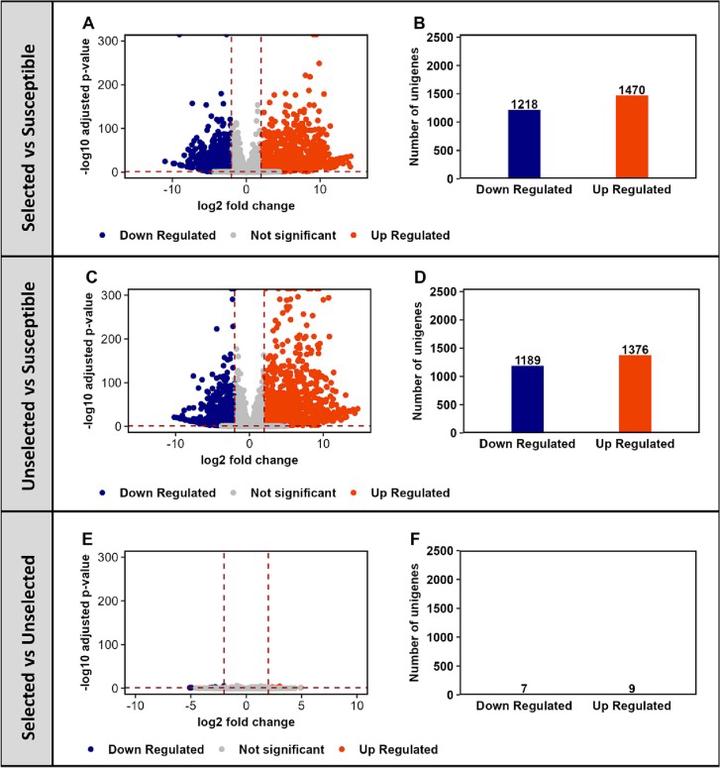Bulk segregant mapping and transcriptome analyses reveal the molecular mechanisms of spinetoram resistance in Spodoptera frugiperda
 Pesticide Biochemistry and Physiology
Pesticide Biochemistry and PhysiologyAbstract
The evolution of resistance to insecticides poses a significant threat to pest management programs. Understanding the molecular mechanisms underlying insecticide resistance is essential to design sustainable pest control and resistance management programs. The fall armyworm, Spodoptera frugiperda, is an important insect pest of many crops and has a remarkable ability to evolve resistance to insecticides. In this study, we employed bulk segregant analysis (BSA) combined with DNA and RNA sequencing to characterize the molecular basis of spinetoram resistance in S. frugiperda. Analysis of genomic data derived from spinetoram selected and unselected bulks and the spinetoram-resistant and susceptible parental strains led to the identification of a three-nucleotide deletion in the gene encoding the nicotinic acetylcholine receptor α6 subunit (nAChR α6). Transcriptome profiling identified the upregulation of few genes encoding detoxification enzymes associated with spinetoram resistance. Thus, spinetoram resistance in S. frugiperda appears to be mediated mainly by target site insensitivity with a minor role of detoxification enzymes. Our findings provide insight into the mechanisms underpinning resistance to spinetoram in S. frugiperda and will inform the development of strategies to control this highly damaging, globally distributed crop pest.